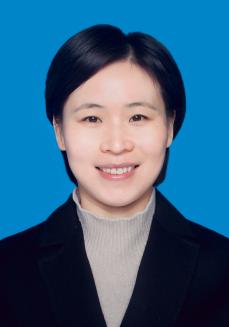The 4th RePSS - Multimodal Fusion Learning for Remote Physiological Signal Sensing
To be held at IJCAI 2025, August 2025, Montreal, Canada
To be held at IJCAI 2025, August 2025, Montreal, Canada


Remote photoplethysmography (rPPG) has shown significant potential in heart rate variability (HRV) estimation. HRV reflects more nuanced autonomic regulation than average heart rate and supports diverse applications, including autonomic function assessment, stress evaluation, and sleep monitoring. This talk introduces two perspectives on rPPG-based HRV monitoring: the time-domain approach focusing on recovering long-range and high-quality blood volume pulse (BVP) signals, as well as the time-frequency approach emphasizing to capture instantaneous spectral representations. From the time-domain perspective, a global spatio-temporal model termed LST-rPPG, is proposed to generate high-quality BVP signals with flexible time duration for accurate HRV measurement. From the time-frequency perspective, a novel method combining wavelet synchro-squeezed transform (WSST) with TransUNet, termed WSST-UNet, is proposed to enhance the time-frequency representations (TFRs) by WSST, and follow-by to extract crisp time-frequency ridge lines from the enhanced TFRs for precise instantaneous heart rate measurement.
Juan Cheng received the B.S. and PhD. degrees from the Department of Electronic Science and Technology, University of Science and Technology of China, in 2008 and 2013, respectively. She is currently a full Professor with the Department of Biomedical Engineering, Hefei University of Technology. Her research interests include biomedical signal/image processing and remote intelligent health monitoring. She has published over 60 papers in international journals with 4800+ citations in Google Scholar, and is serving as an Associate Editor for IEEE Signal Processing Letters. She was listed among the world's top 2% of scientists in 2024.

In recent years, remote physiological signal measurement has attracted significant attention due to its convenience and effectiveness. It has made substantial progress in applications such as invasive healthcare applications. However, when applied to complex real-world scenarios, the accuracy of the measurements is often challenged by two major factors: video degradation and domain shift on dynamic environments. As we know, real-world videos are typically affected by various forms of unknown and mixed degradation. Due to the subtle nature of physiological signals, they are particularly susceptible to interference from these degradations. It remains a critical challenge to enhance the robustness of physiological signal extraction under unknown degradation conditions. Meanwhile, real-world environments are highly dynamic and induce domain shift across diverse scenarios. In continuously changing dynamic scenarios, how to reduce the interference of domain shift on heart rate signal extraction, and how to leverage unlabeled data from new domains to improve the cross-domain adaptability of the models, are also pressing issues to be addressed. I will share the recent research works in my group to solve the above challenges and discuss the future trend.
Jingang Shi received the B.S. and Ph.D. degrees from the Department of Electronics and Information Engineering, Xi’an Jiaotong University, China in 2007 and 2015, respectively. From 2017 to 2020, he was a Postdoctoral Researcher with the Center for Machine Vision and Signal Analysis, University of Oulu, Finland. Since 2020, he has been an Associate Professor with the School of Software, Xi’an Jiaotong University. He has published over 60 papers in international journals and conferences. He served as the Area Chair for ICME. He also organized workshops about Robust Multimedia Image Understanding and Subtle Visual Computing on international conferences such as ICME and ACM Multimedia. His current research interests mainly include image restoration, affective computing, and biomedical signal processing.
The workshop calls for high-quality and original research works. The topic includes but is not limited to:
Paper submission is open.
Note: Each paper must be presented on-site by an author/co-author at the conference.